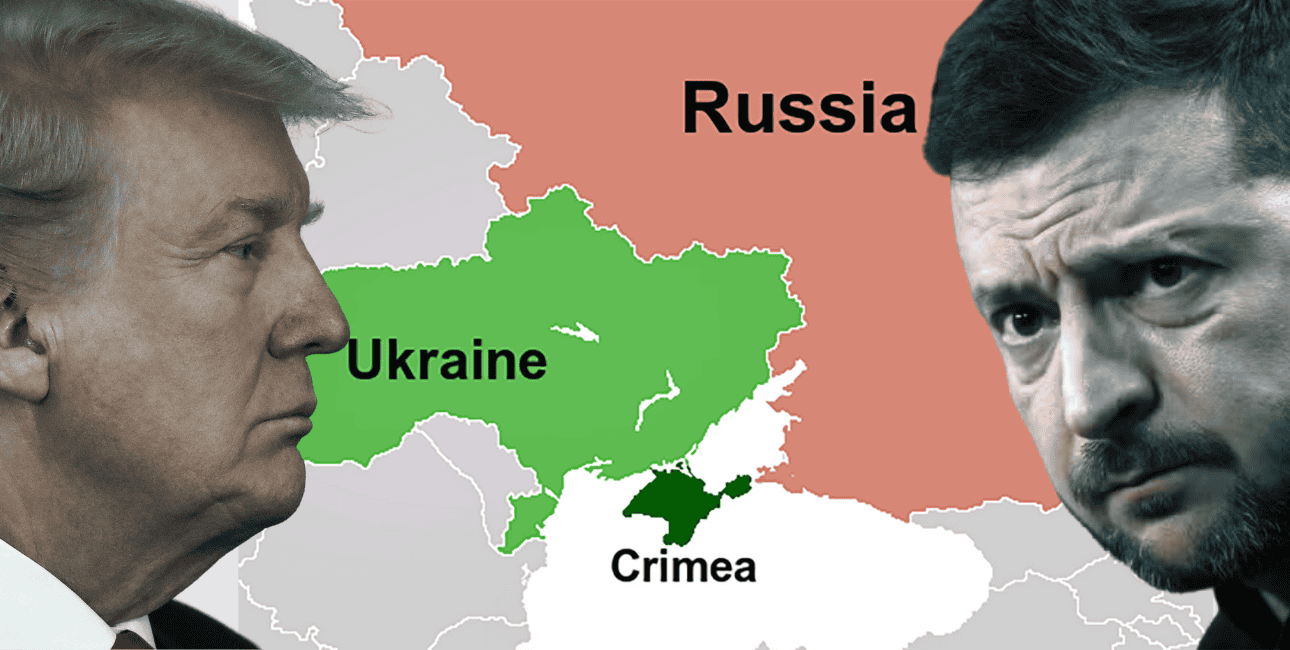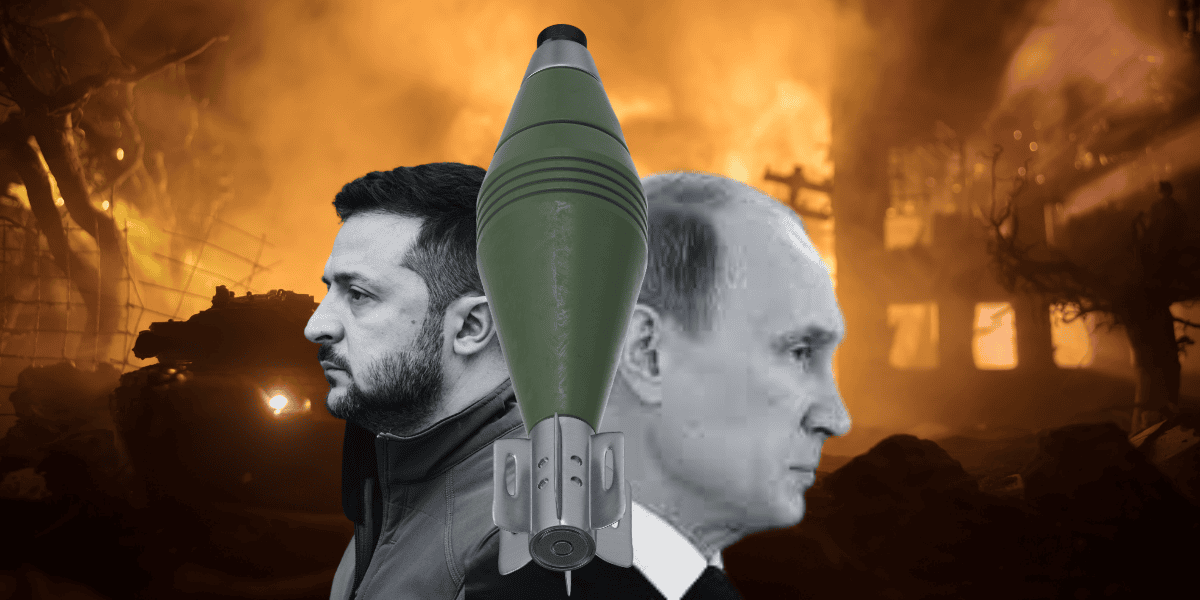As Ukrainian and European Officials meet with the US delegation for the next round of peace talks in London, media reports have claimed that the US is preparing to recognize the Crimean Peninsula as Russian territory and freeze the war’s frontline as part of a peace framework presented to Kyiv.
The US proposals, presented to Ukraine in Paris last week, include having Washington formally recognize annexed Crimea as Russian territory and eventually lifting sanctions against Russia under a future accord, the Washington Post reported, citing three people familiar with the matter.
The peace framework also includes freezing the war’s frontlines as they stand today, effectively amounting to an unofficial recognition of Russian control of nearly all areas occupied since the 2022 invasion, another US media outlet, Axios, reported.
Russia will also receive assurance that Ukraine will not join NATO, one of President Vladimir Putin’s key demands.
In return, Russia would halt its military campaign in Ukraine at a time when Moscow enjoys battlefield momentum and a clear advantage in terms of manpower and weaponry.
Ukraine, on the other hand, is getting few tangible benefits from the peace deal. It will be allowed to maintain its large army, might regain some territory in Kherson, could receive some form of security guarantees, and a commitment to financial aid in its reconstruction plan.
“The proposal says very clearly what tangible gains Russia gets, but only vaguely and generally says what Ukraine is going to get,” a source close to the Ukrainian government told Axios.

While Ukraine will not be forced to recognize Crimea as Russian territory, recognition by the US and possibly other countries will go a long way in legitimizing the Russian control of the Crimean Peninsula, occupied by Moscow in 2014.
Ukrainian President Volodymyr Zelensky told reporters on April 22 that Kyiv would not recognize Crimea as Russian, noting that doing so would violate the country’s constitution.
US Shifting Stand On The Crimean Peninsula
The US has responded strongly to the Russian occupation of the Crimean Peninsula in 2014, calling it illegal and a violation of Ukraine’s sovereignty and international law.
The U.S. supported UN General Assembly Resolution 68/262, affirming Ukraine’s territorial integrity.
The Obama administration imposed a series of economic sanctions targeting Russian officials, entities, and the Russian energy and defense sectors. Washington also provided financial and non-lethal military aid to Kyiv. Russia was also suspended from the G8 grouping.
Thus, the US’s push for international recognition of Crimea as Russian territory might seem like a massive policy reversal.
However, a careful analysis of statements made by US officials over the past few years reveals that this policy reversal was in the making for a considerable time.
In June 2018, Trump, during his first presidency, for the first time suggested that the US might be open to recognizing Crimea as Russian territory.
Ahead of his meeting with President Putin in Helsinki in July 2018, Trump told reporters that recognizing Crimea as Russian territory would be up for discussion during his meeting with the Russian President.
“We’re going to have to see,” Trump told reporters on Air Force One when asked if the U.S. would accept Russia’s claim on the territory it seized from Ukraine in 2014.
At the G-7 summit in June 2018, Trump reportedly suggested Crimea should belong to Russia because most people there speak Russian.
In October 2022, Elon Musk suggested in a Twitter poll that Ukraine should cede the strategically important Crimean Peninsula to Russia and make other concessions as part of a peace deal.
“Ukraine-Russia Peace: Redo elections of annexed regions under UN supervision. Russia leaves if that is will of the people. Crimea formally part of Russia, as it has been since 1783 (until Khrushchev’s mistake). Water supply to Crimea assured. Ukraine remains neutral,” Musk wrote on his social media platform X.
In September 2023, Musk stated that he had refused to grant Kyiv access to his Starlink communications network over Crimea in 2022 to avoid complicity in a “major act of war.”
“There was an emergency request from government authorities to activate Starlink all the way to Sevastopol. The obvious intent being to sink most of the Russian fleet at anchor. If I had agreed to their request, then SpaceX would be explicitly complicit in a major act of war and conflict escalation,” Musk wrote on platform X.
His comments came after the release of a biography of Musk by Walter Isaacson, which alleged that Musk switched off Ukraine’s access to Starlink because he feared that an ambush of Russia’s naval fleet in Crimea could provoke a nuclear response from the Kremlin.

While Musk did not say so explicitly, this statement implicitly asserted that Crimea should be treated differently from the Southeastern Ukrainian region of Donbas.
Separately, at least since 2023, US military officials have questioned Ukraine’s ability, even with Western support, to take back control of Crimea from Russian occupation.
Since early 2023, the Pentagon’s top military analysts have downplayed the possibility of Ukraine retaking Crimea by military force in classified briefings with US lawmakers.
In February 2025, just weeks into Donald Trump’s second presidency, his secretary of defense, Pete Hegseth, signaled a major shift in Washington’s approach to the war in Ukraine during his first meeting with NATO allies.
“Our message is clear: The bloodshed must stop and this war must end…We will only end this devastating war – and establish a durable peace – by coupling allied strength with a realistic assessment of the battlefield,” Hegseth said, adding that that means Ukraine must abandon its “illusionary goal” of a return to its pre-2014 borders, referring to the year Russia occupied the Crimean Peninsula.
This was the first clear signal from the Trump administration that the US was thinking of recognizing Russian control over the strategic peninsula.
Now, as the US media is reporting, the Trump administration has offered to recognize Crimea as Russian territory in its peace plan to end the Ukraine war.
In fact, if media reports are to be believed, the US is making a critical distinction between the Russian-occupied Crimean Peninsula and the Russian-occupied Southeastern Ukraine.
While the US will recognize Crimea as part of Russia, the Russian-occupied Southeastern Ukraine will only stay under Moscow’s control without any formal recognition.
The question then arises, why is the US making this critical distinction between Crimea and other Russian-occupied parts of Southeastern Ukraine?
Russia’s Historical Claims On Crimea
A careful analysis of history will show that Russia’s claim over Crimea is more substantial than Russia’s claim over the four Southeastern regions of Ukraine.
Part of the Russian Empire for centuries: The Kievan Rus exercised some control over Crimea from the 10th to the 13th century, when it fell to Mongol invasions. It was part of the Golden Horde Mongol state. The Golden Horde was replaced by the Khanate of Crimea, which the indigenous Tatars dominated. In 1475, the Crimean khanate submitted to Ottoman suzerainty.
Under Peter the Great, Russia began expanding its southern frontier in the late 17th century. Russia fought a series of wars with the Ottoman Empire to control the Black Sea Region.
Russia annexed Crimea in 1783 under Catherine the Great, following military victories over the Ottomans and the signing of the Treaty of Küçük Kaynarca in 1774.
Crimea remained part of the Russian Empire till the Bolshevik Revolution (1917), when it became part of the Soviet Union and was administered as part of the Russian Soviet Federative Socialist Republic.
In 1954, Crimea was transferred to Ukraine. Russia argues that it was an administrative transfer that made little difference at the time, as Crimea was still part of the Soviet Union.
The official rationale for the transfer of Crimea from Russia to Ukraine in 1954 was that it was a “noble act on the part of the Russian people” to commemorate the 300th anniversary of the “reunification of Ukraine with Russia” (a reference to the Treaty of Pereyaslav signed in 1654 by representatives of the Ukrainian Cossack Hetmanate and Tsar Aleksei I of Muscovy) and to “evince the boundless trust and love the Russian people feel toward the Ukrainian people.”
When Crimea was transferred to Ukraine, it had a significant Russian majority. In the 1950s, the population of Crimea, approximately 1.1 million, was roughly 75 percent ethnic Russian and 25 percent Ukrainian.
New research suggests that, notwithstanding the hyperbole of Russian-Ukrainian friendship, one key reason for the transfer of Crimea to Ukraine was the internal power struggle between Nikita Khrushchev and Soviet Prime Minister Georgii Malenkov.
However, the chaotic disintegration of the Soviet Union in 1991 meant that there was no rational division of territories between the various former Soviet Republics. The newly independent states, including Russia, recognized one another in their then-existing borders.
Inhabited by a Majority of Russian Speakers: Crimea is predominantly inhabited by Russian speakers. According to the 2001 census, 77% of Crimean inhabitants named Russian as their native language, 11.4% – Crimean Tatar, and 10.1% – Ukrainian. The Russian majority in Crimea, however, is also a result of the 19th-century Russification policies.
Home to the Russian Black Sea Fleet: Crimea has also been home to the Russian Black Sea Fleet since 1783. Even when Crimea was under an independent Ukraine, Sevastopol was home to Russia’s Black Sea Fleet.
In 2008, Ukraine, under the pro-Western President Viktor Yushchenko, demanded that Moscow not use the Black Sea Fleet during its war with Georgia. Later, Moscow and Kyiv decided that the Russian Black Sea fleet would stay till 2017. However, following the election of the pro-Russian Viktor Yanukovych as president in 2010, Ukraine agreed to extend the lease by 25 years beyond 2017, in return for cheaper Russian gas.
2014 Controversial Referendum: Even though many people question the legality and sanctity of the 2014 referendum, Russia annexed the Crimean Peninsula after a hastily organized referendum in Crimea, in which 97% of the voters supported joining Russia.
Of course, Ukraine counters all these points, saying that Kyiv is an equal inheritor of the legacy of Kievan Rus, that the 1954 transfer of Crimea to Ukraine was complete and irreversible, that Russia officially recognized Ukraine’s independence and sovereignty, including on Crimea, after its 1991 independence, and that the 2014 referendum was a sham and not binding.
However, Russia has a strong historical, ethnic, and cultural claim on Crimea, and many analysts believe that even in an independent referendum, the majority of Crimean inhabitants will decide to join Russia.
Besides, many argue that Ukraine cannot realistically hope to wrest back control of Crimea from Russia. This is a point that is acknowledged not only by US military officials but even by President Zelenskyy.
“We do not have enough forces to return Crimea,” Zelensky told reporters last year. “Our army does not have enough forces. We must seek diplomatic means.”
However, it seems that even if the US recognizes Crimea as Russian territory, Ukraine will continue to claim the Black Sea region and will continue its diplomatic efforts for the return of the territory.
- Sumit Ahlawat has over a decade of experience in news media. He has worked with Press Trust of India, Times Now, Zee News, Economic Times, and Microsoft News. He holds a Master’s Degree in International Media and Modern History from The University of Sheffield, UK.
- He can be reached at ahlawat.sumit85 (at) gmail.com




